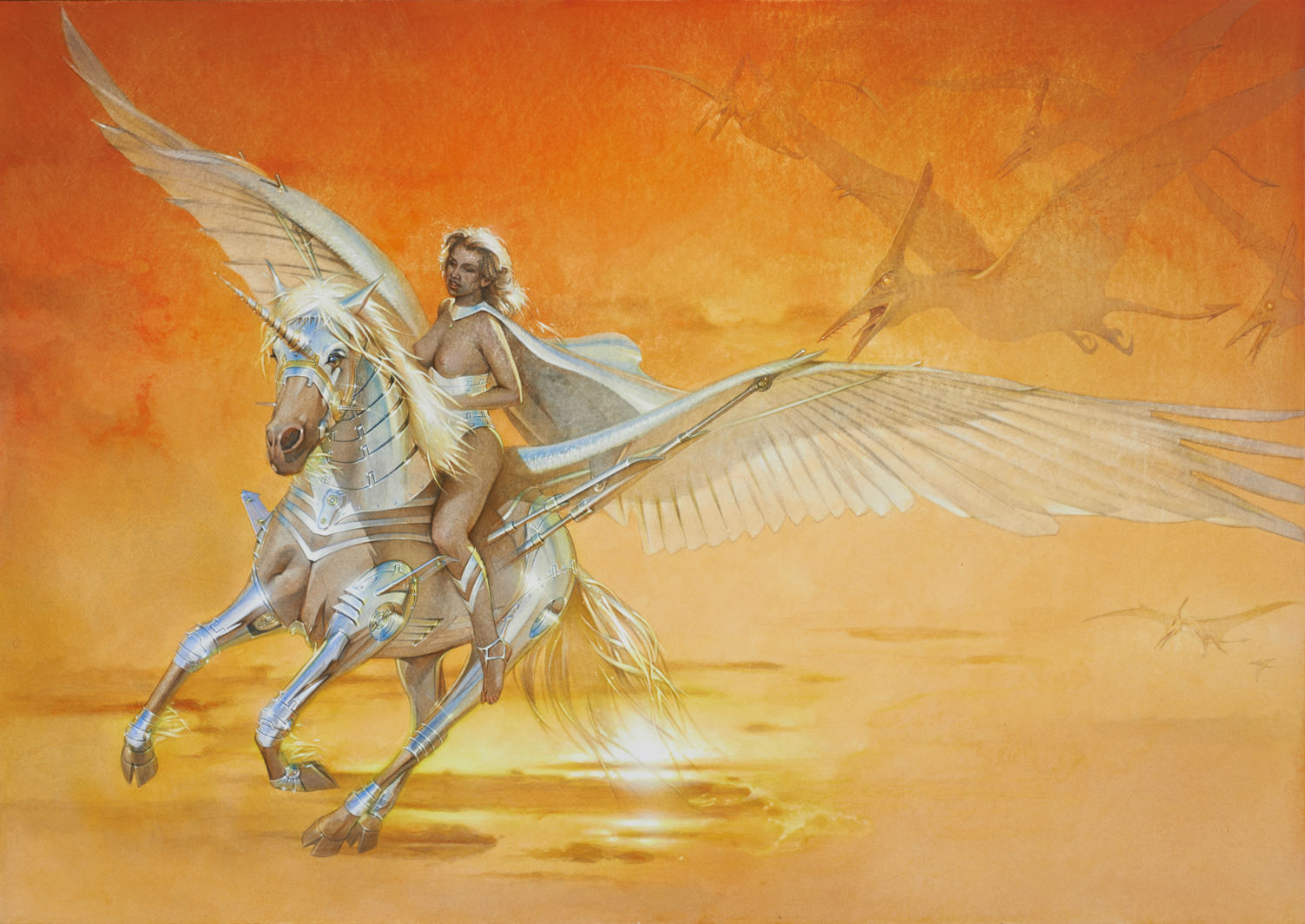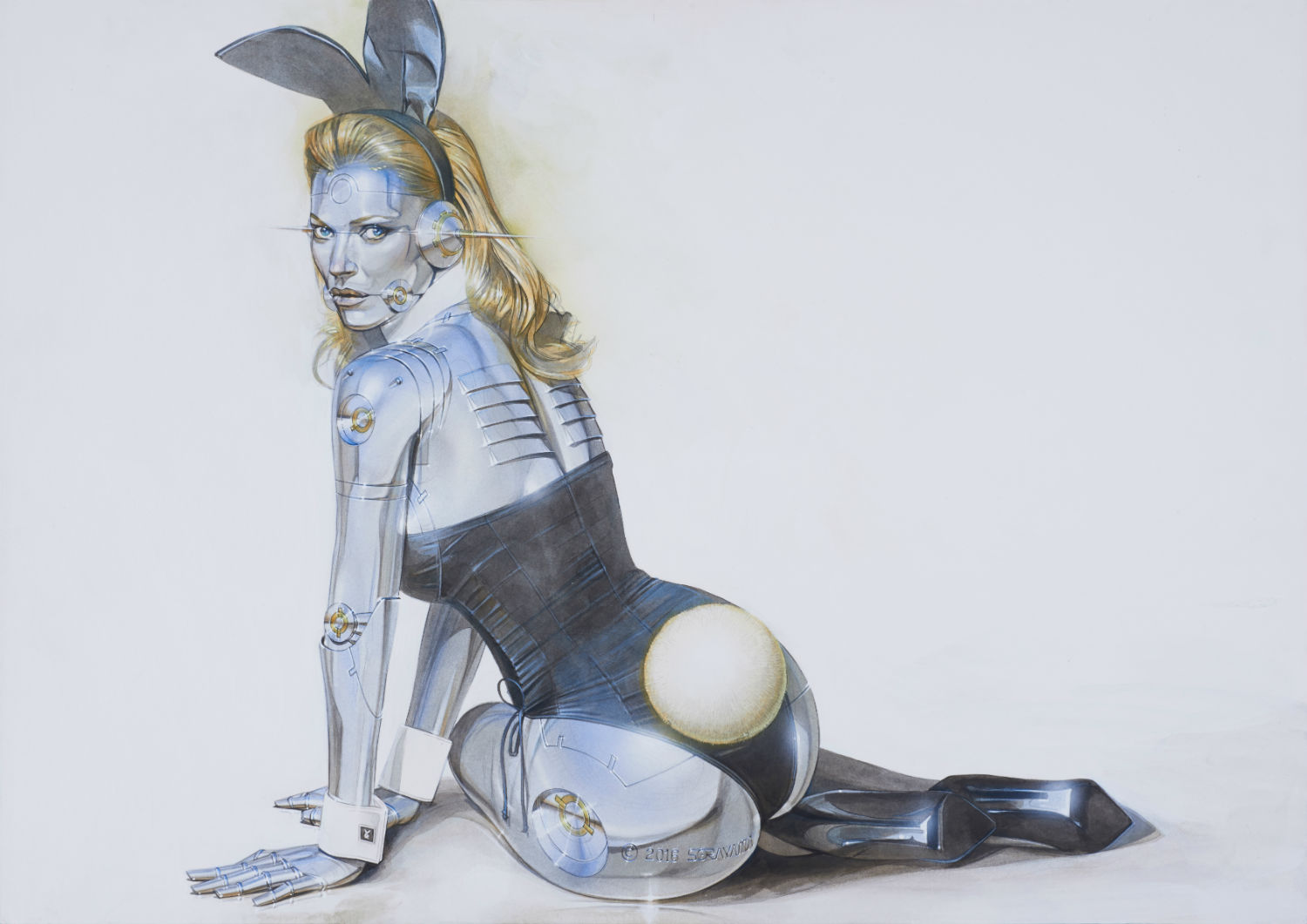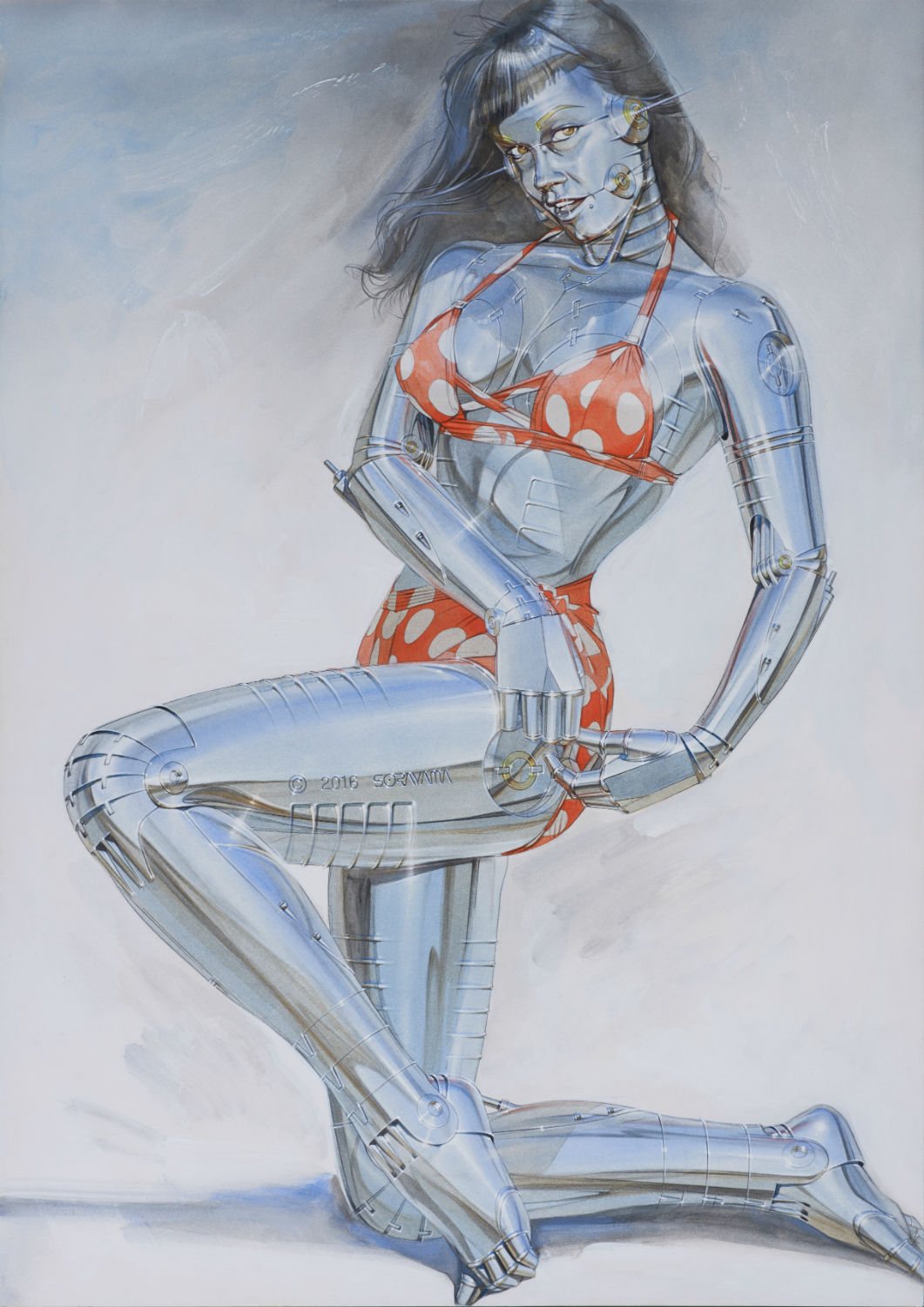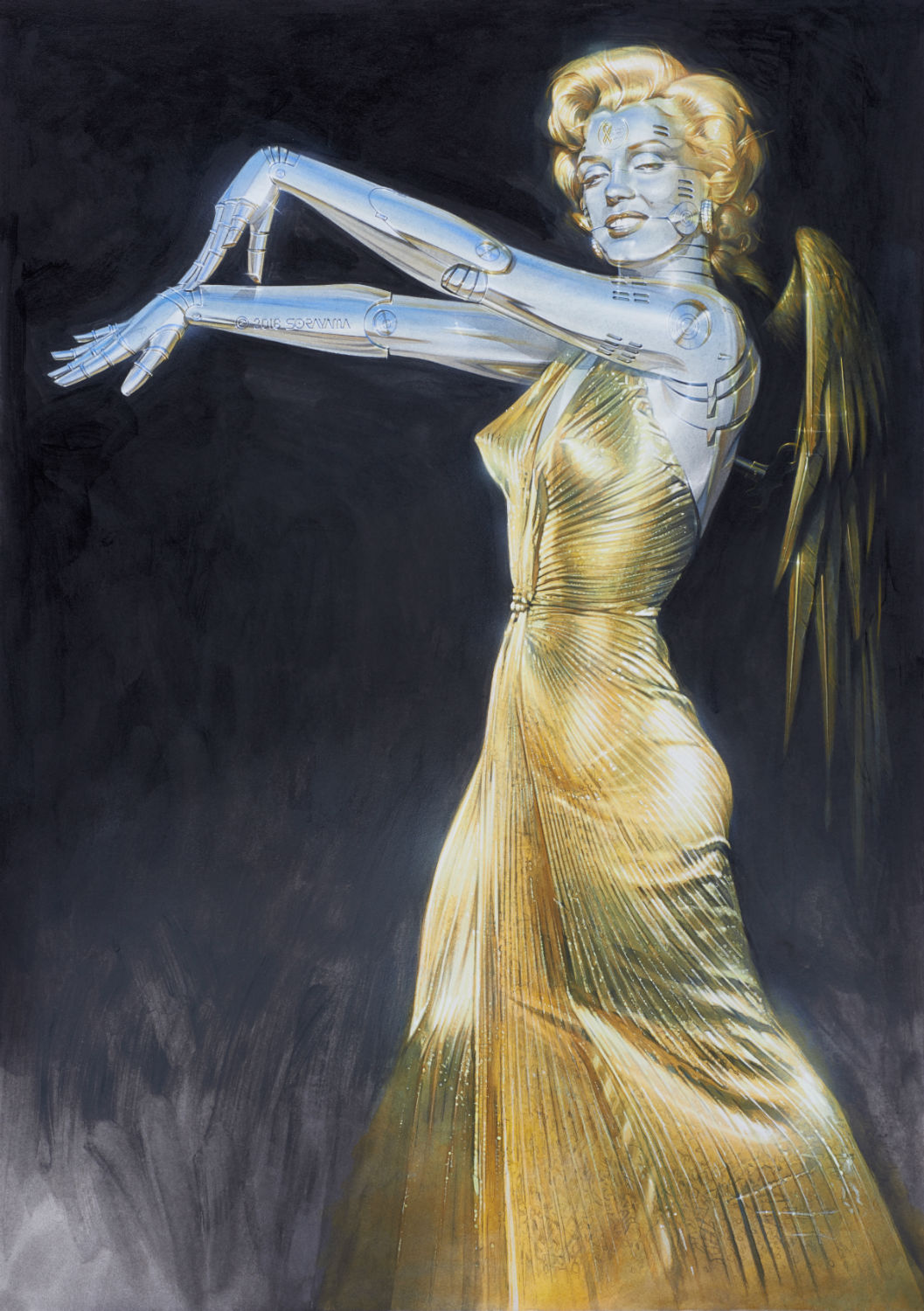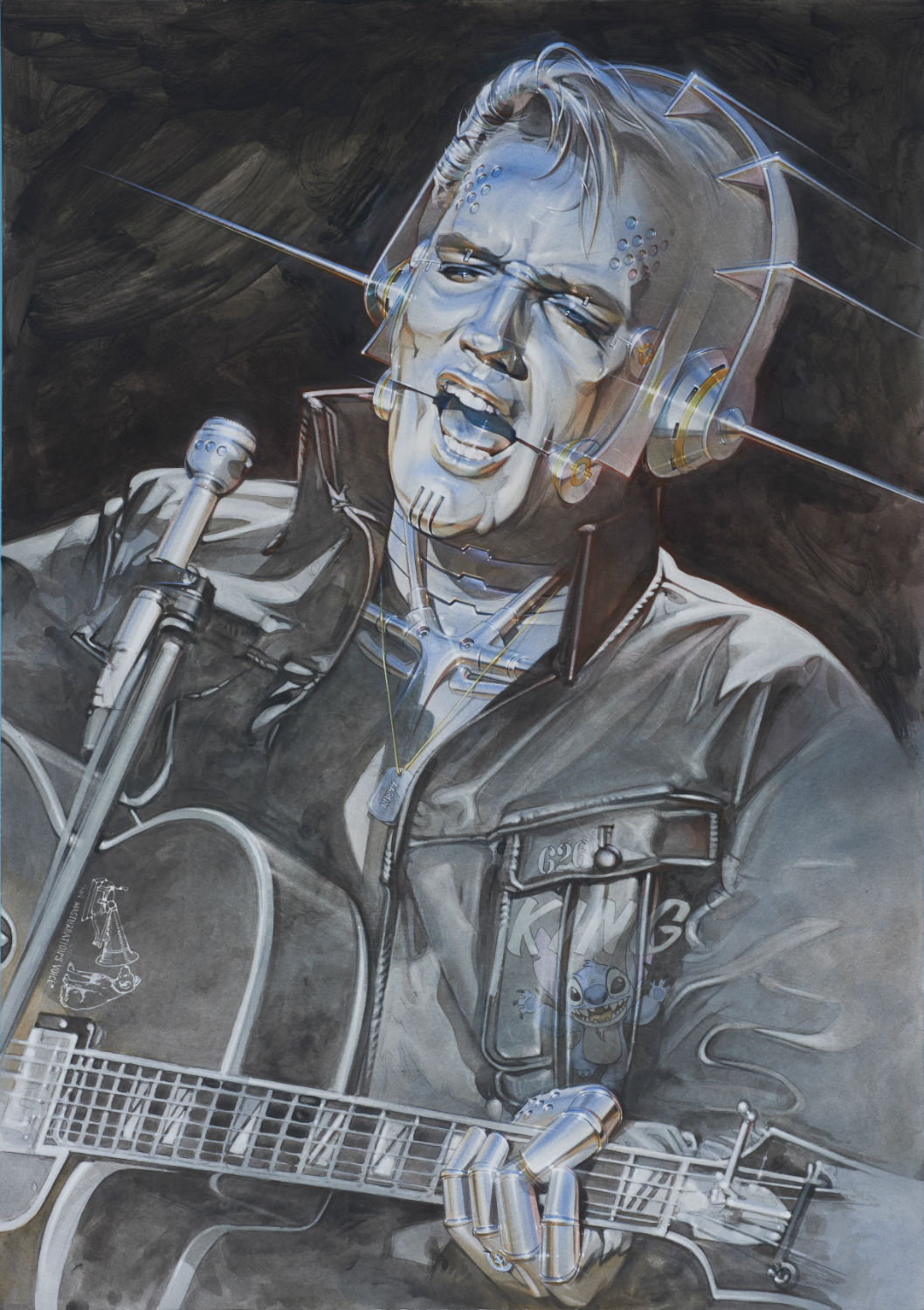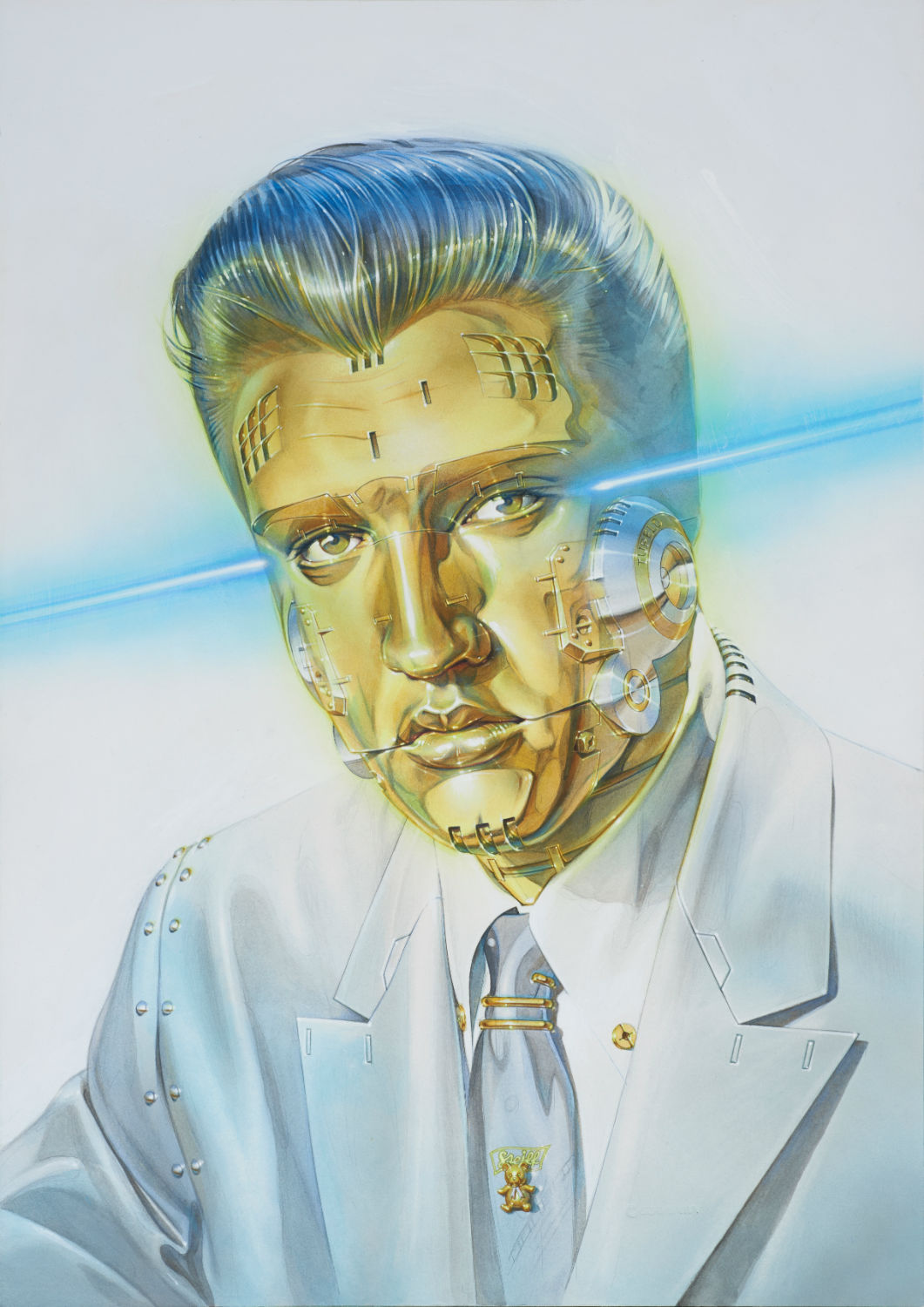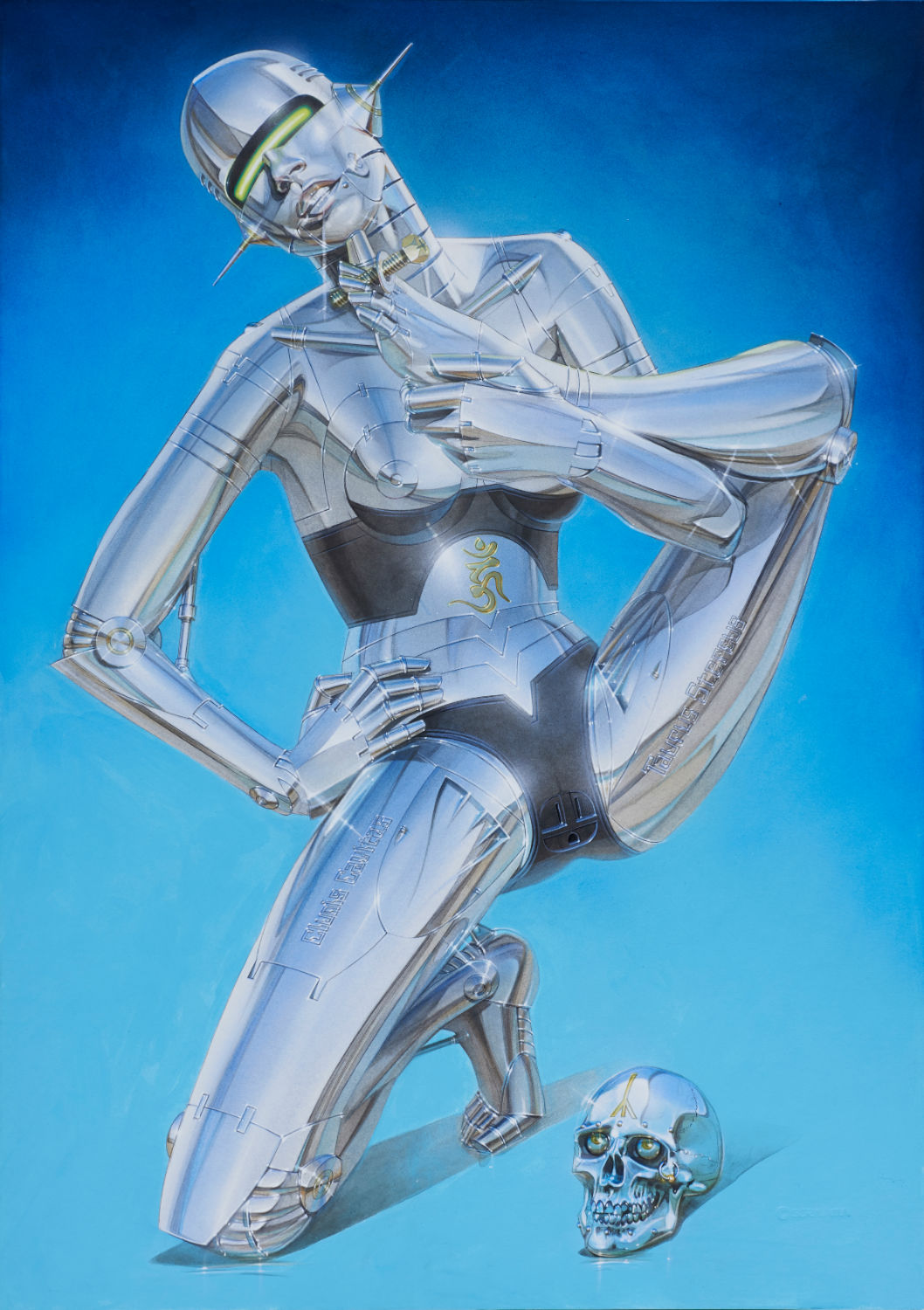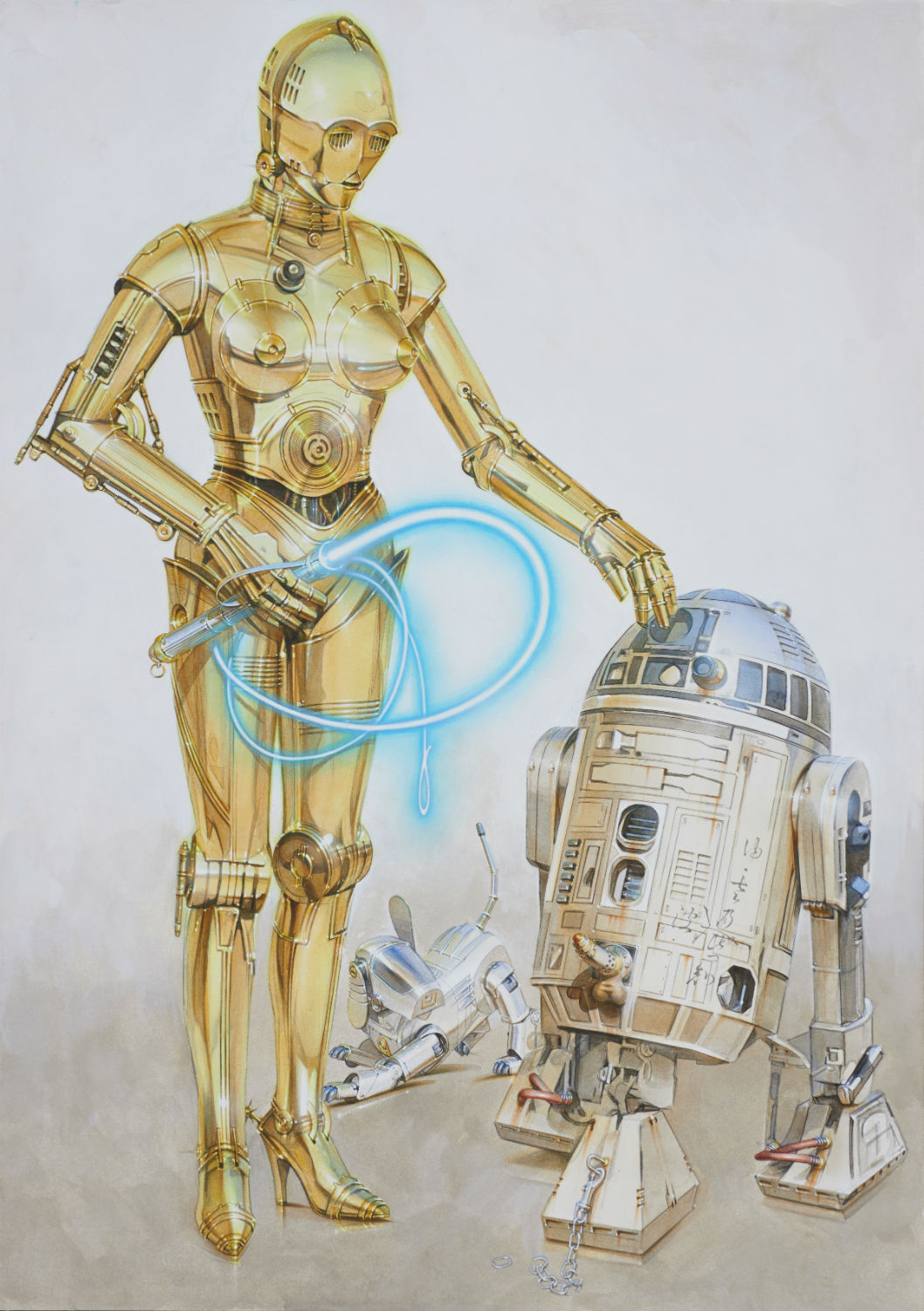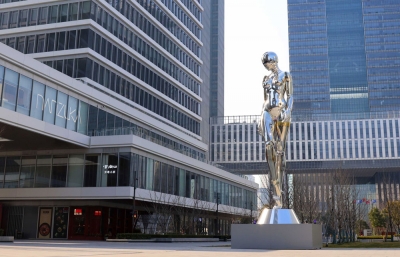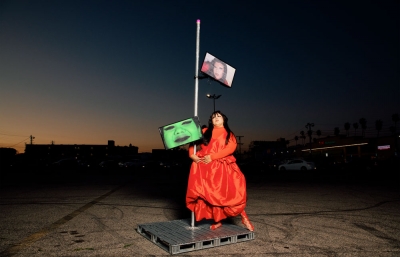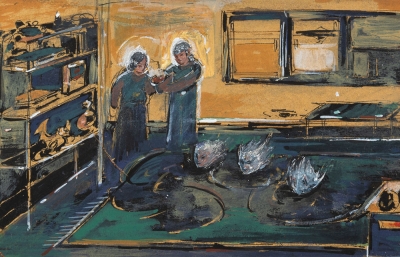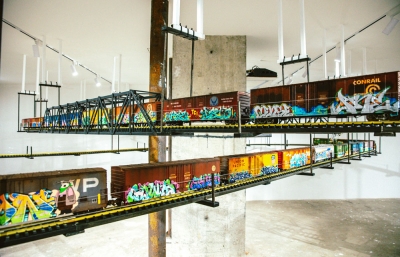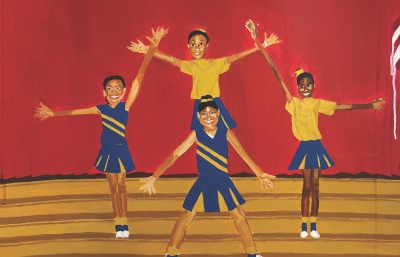There is a decades-long discussion in the art world about how to connect the creative entities within fine art and technology. There are similarities and shared interests in these seemingly disparate communities, and certain collaborations have produced landmark results (see James Turrell). But Japanese artist and futurist Hajime Sorayama has dreamt up a different approach; his “superrealism” style of creating biomechatronic women in so-close-to salacious positions built not only a foundation for his actual participation in technology design (he did create the first concept for what would become Sony's robotic "pet", AIBO) but of an alternate universe that has influenced film and industrial design.
On the eve of his opening at Jacob Lewis Gallery in NYC, his new gallery representation in the US, we asked Sorayama about Japan’s transformation as an art epicenter, the essence of superrealism, and whether pin-ups still resonate with him.
Evan Pricco: I'm curious, if you can think back to 40 years ago, what was the art scene in Japan like in the 1970s and early 1980s. You were doing illustration work, but were there realistic expectations to be a "fine artist" with gallery shows and representation? Or was it far more realistic to be a commercial artist?
Hajime Sorayama: At that time, doing commercial art would earn you a lot more exposure, so I cast my net wide and shallow in terms of my values. What can I say? When you’re young and taking on the world, the money at your fingertips seems more enticing than anything else. Now I don’t have much time left and I would like to create work that is a bit more ripened, but at my age, I don’t see any way to emerge from the earthly world in which I’ve operated.
Your fascination with the pin-up style started when you were quite young. Looking at the roots of Juxtapoz, and Robert Williams and R. Crumb, your contemporaries, you grew up with a certain fascination with the female form. At the time, were you the only one of your peers doing the pin-up drawings?
I know many artists who took pin-up work on commission, but don’t really know of any who did it out of pure love of the genre. As it was my fate to be born a man, I didn’t consider my sex drive to be anything out of the ordinary, but looking back, I guess my curiosity toward the opposite sex must have been extreme. With that said, my longings were not so much carnal as they were an admiration of women as goddesses.
By the time you were approached to do the initial drawings of the Sony AIBO, you were already famous for work that was, let's just say, a little more on the salacious side. To be asked to be part of such a landmark project but also have a career of these incredible robot women drawings seems quite a change of pace. But you know the story, how did you go from superrealism to AIBO?
I think I was just categorized as a person already doing artwork about robots. I doubt that the third parties who were involved really knew much more than that. Actually, I aimed to give the AIBO an erotic finish but no one seemed to understand this. My work on the project unfortunately never progressed beyond making clear the robot’s functions via its design.

Superrealism to me means something that doesn't quite exist yet. Am I completely off?
The difference between superrealism and the hyper-realism or photorealism which were prevalent at that time, is the level of fantasy in the motifs. No matter what I paint, it will exist once I am done, and at that point, my interest and motivation are halved. I think my understanding of "superrealism" is a bit different from the general use of the term now.
One of the things that I think could often be overlooked in your work when not seen in person, is the amount of incredible detailed precision. And I think that plays into my last question; have you always been blessed with that sort of skill? It’s almost too real to be real.
If you were to look at my pictures in their original state, I think you would find that they are very loosely painted. I simply focus on the parts that will jump out to the naked eye and attack those relentlessly. I am a very resourceful painter and I work very quickly. I am also very good at taking the easy way out. I admit it!
Going back to my Robert Williams and Crumb references, there was a time when this sort of "outsider" art style of comics, pin-ups, illustration, and erotica wasn't considered museum-level art. But the times have changed so much, and there are a lot of blurred boundaries between high and low art that you have had the privilege to see, and even effect, with your success. Does this change in culture surprise you at all?
Appetite and sexual desire are the pinnacles of virtue, though I know this is opposite of the Christian point of view. There’s no getting around that truth, so it’s time we all accept it. The glorification of struggle that we see in Hollywood is false, for no war can be fought for a just cause. Obviously, you could say the same thing about religion, but at the end of the day, comics are interesting. What’s a man to do? In this way, I’m not concerned about how my work is categorized; I just like to paint more than anything else. In terms of my love of painting, I think I can compete with anyone.
What are your favorite pin-ups magazines or websites that you refer to now?
These days, I feel like my youth ended with the close of the twentieth century. It’s sad to say, but I’ve gotten old. I find myself struggling to engage with the times we live in now. I know how pathetic that sounds...
What do you have prepared for the Jacob Lewis show?
I received an offer to do something related to the 1960s. The timing of the exhibition is in Fall, so I researched the current trends in New York. It was a bit difficult for me to judge over here in Tokyo, but the eventual conclusion was to paint Kate Moss. I had wanted to do old-school US icons like Elvis, Marilyn, Bettie Page, etc, but in the end, the goal is always to get a standing ovation wherever I may be. If people don’t respond to my works, then they’re nothing more than garbage. What was mysterious for me this time was that I began painting Kate with very little understanding of her qualities, but as I began to actually move my brush, I got more and more into it.
Sorayama’s solo show at Jacob Lewis Gallery in NYC will run through December 17, 2016.
----
Originally published in the December 2016 issue of Juxtapoz Magazine, on newsstands worldwide and in our web store.

